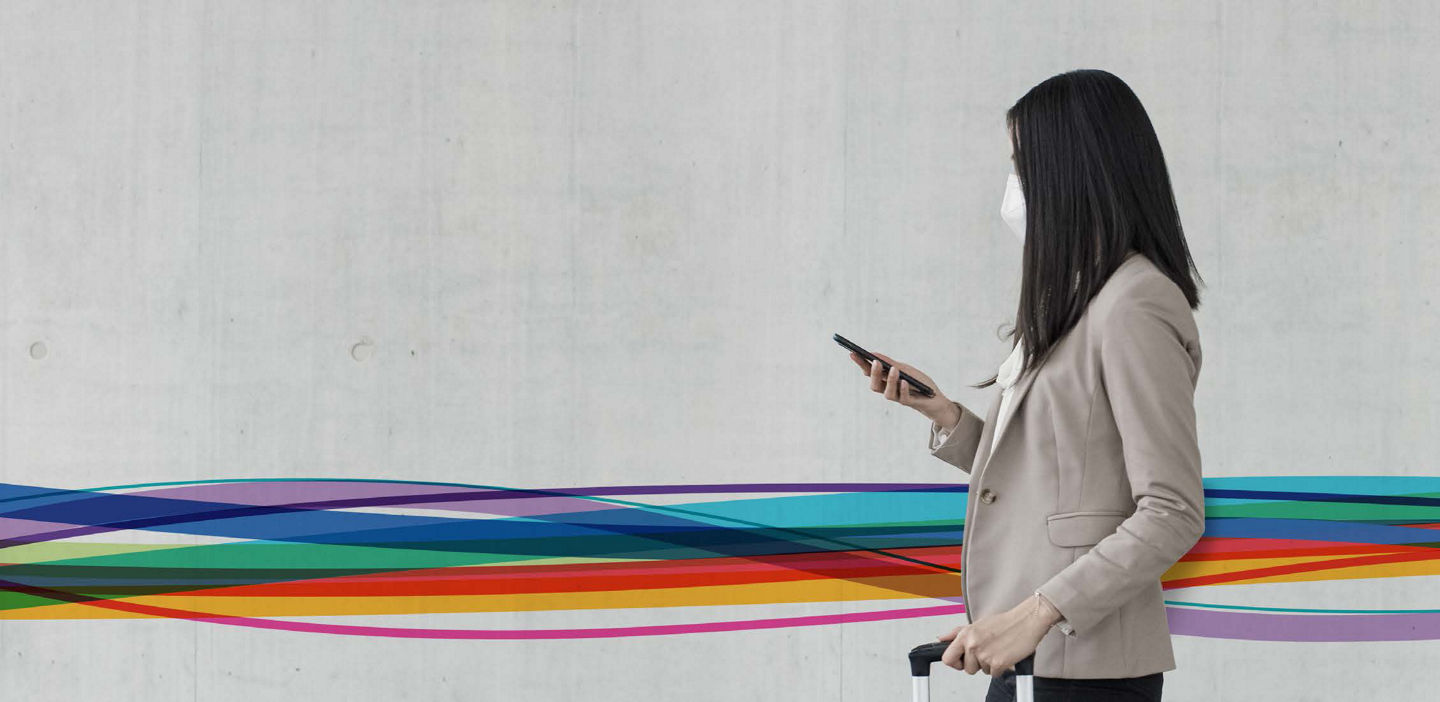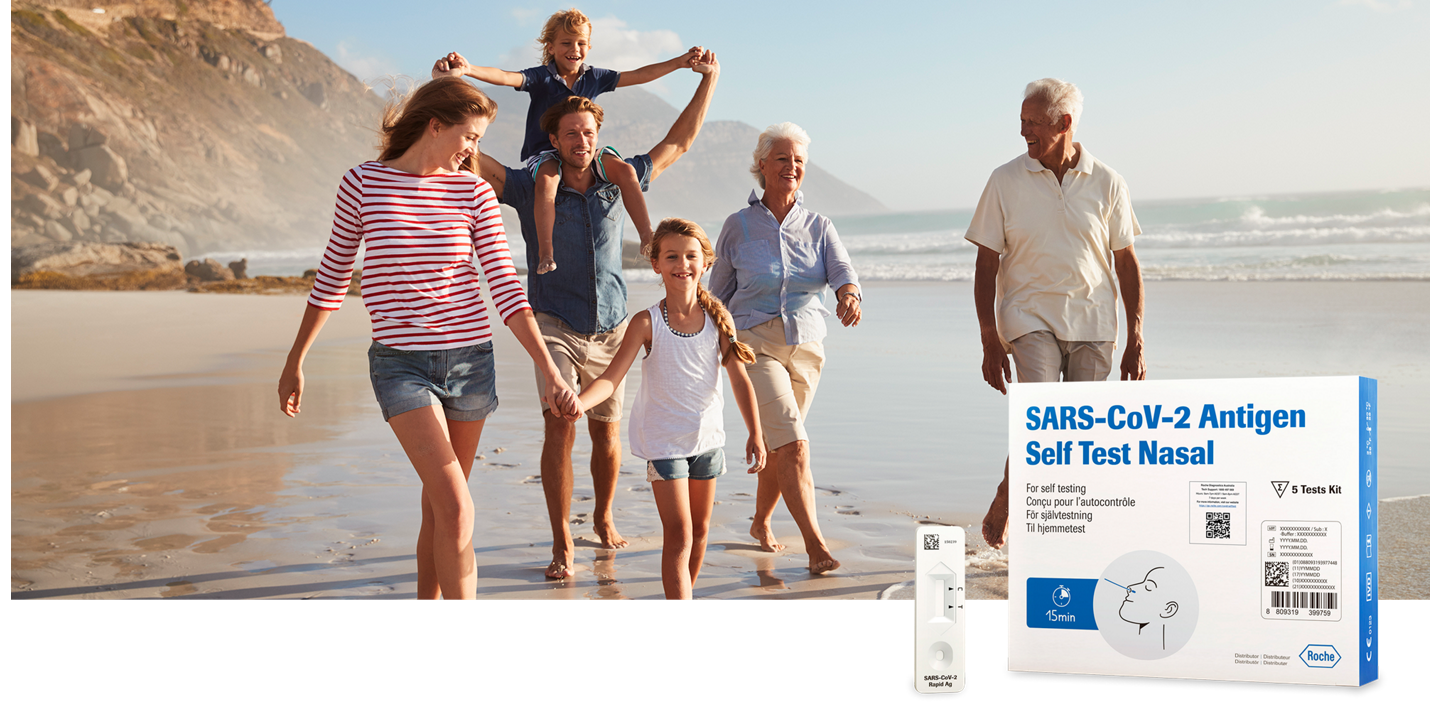Rapid Antigen Test for COVID-19
Information for patients on the Roche SARS-CoV-2 Antigen Self Test Nasal
SARS-CoV-2 Antigen Self Test Nasal
Keeping you and your loved ones safe.
Reliable SARS-CoV-2 antigen test results in just 15 minutes.
The COVID-19 Rapid Antigen Self-Test (for home use) is intended for unsupervised testing in the home or other environment.
Negative test results do not exclude infection with COVID-19 (so face masks, social distancing and good hygiene practice must be maintained).
Follow current government health messaging regarding polymerase chain reaction (PCR) testing requirements.
Testing in your hands
Roche's SARS-CoV-2 Antigen Self Test Nasal provides reliable results for individuals suspected of having COVID-191. This rapid antigen test can be performed by you, the patient, whenever and wherever needed.

Quick results
The result is available in just 15 minutes.
This rapid antigen test for COVID-19 can help enable you to quickly assess whether you may be infected or not. If you test positive, you can immediately follow official advice on further testing and self-isolation.

Easy to use
As the swab only has to be inserted into the lower nasal cavity, collection of the sample is relatively simple and comfortable. All the necessary materials are included within the kit and there are only 4 short steps required to complete the test.

Reliable results
The test determines your infection status with a high level of accuracy and precision1.
Many of the SARS-CoV-2 variants have been analysed using the test and do not alter the reliability of the results2.
Instructional video
Quick Reference Guide
Download the Quick Reference Guide for patients
using the Roche SARS-CoV-2 Antigen Self Test Nasal
Instructions for Use
Download the Instructions for Use insert for the
Roche SARS-CoV-2 Antigen Self Test Nasal
Antigen Testing User Guide
Everything you need to know about testing with the
SARS-CoV-2 Antigen Self Test Nasal
COVID-19 Rapid Antigen Testing
Solutions for Professional Use
Protect your workforce and maximise productivity.
Talk to us today about how we can help your COVID-19 Safety Plan.

The COVID-19 Rapid Antigen Point of Care (POC) tests (for professional use) are intended for use at the point of care and must be used by relevant practitioners, or persons under their supervision, who are trained in the correct use of the goods and the interpretation of the test results. These tests must not be supplied for the purpose of self-testing.
Negative test results do not exclude infection with COVID-19 (so face masks, social distancing and good hygiene practice must be maintained).
Follow current government health messaging regarding polymerase chain reaction (PCR) testing requirements.

NAVIFY® Pass
Your personal COVID-19 Test Solution
NAVIFY® Pass is a free digital COVID-19 solution that can be used for your personal record of home testing using the Roche SARS-CoV-2 Antigen Self Test Nasal or for authentication of test result entry requirements for organisations using NAVIFY® Pass.
NAVIFY® Pass can be downloaded from both the Apple App Store and Google Play.
NAVIFY is a trademark of Roche. All other product names and trademarks are the property of their respective owners.


Recording the result in NAVIFY® Pass

1. Select the Home Test Icon

2. Scan the code on the test device

3. Enter the Result
NAVIFY® Pass
Your personal test record

Create your personal, secure, NAVIFY® Pass account. Scan your Roche SARS-CoV-2 Antigen Self Test Nasal QR and input your result. Your record will be stored for your personal use.
NAVIFY® Pass
For event or workplace entry

If an event or workplace uses NAVIFY® Pass, you can show your unique QR for scanning. The entry marshal will only see a tick for approved access, without sharing personal test details.
Other Stockists
Body Care
Capital Chemist
Chempro
Covax Australia
Good Price Pharmacy
healthSAVE Pharmacy
Hemisphere Management Group
Impressive Medical Supplies
Pharmacy Choice
Rimstar Group
Staying Safe
TerryWhite Chemmart
Wellbeing Services
Frequently asked questions
Do you still have questions?
For Technical Support please call 1800 497 069 9am-7pm AEST / 9am-8pm AEDT, 7 days per week
Or contact us via the form below and a member of the team will get back to you.
Additionally, you may wish to report poor performance or usability issues directly to the Therapeutic Goods Administration (TGA)
via the Medical Device Incident Reporting scheme, email [email protected] or call 1800 809 361.
To contact your local state/territory health department click on the following link:
https://www.health.gov.au/about-us/contact-us/local-state-and-territory-health-departments
09441751001_00000000_02

